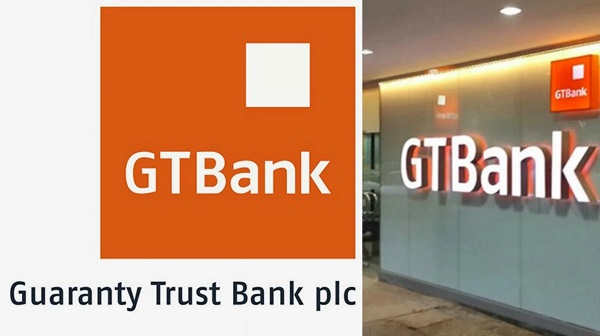Top 10 Common Problems With Nigerian Microfinance Banks
Top 10 Common Problems With Nigerian Microfinance Banks. Get Informed On The Problems Of Microfinance Banks. Check This Post.

The main aim of Microfinance is to provide financial services to the poor who are traditionally not served by the conventional financial institutions. In Nigeria today, a large percentage is till excluded from financial services. Microfinance Bank is licensed by the Central Bank of Nigeria CBN to carry on the business of providing financial services such as savings and deposits, loans, domestic funds transfer and non-financial services to micro-finance clients, but like every good one, the micro-finance bank is dotted with several problems and in this article, we will be highlighting some of the problems with Nigerian Microfinance Banks:
What Are The Common Problems With Nigerian Microfinance Bank
- Corruption
- Demand For Higher Interest
- Inadequate Of Donor Funding
- Poor Mentatility About Loans In Nigeria
- Low Banking Culture
- Lack Of Adequate Loan Capital To Increase Loan-able Funds
- Inadequate Awareness
- Mis-management By The Managements
- Absence Of Basic Infrastructure
- Absence Of Good Roads
Top 10 Common Problems With Nigerian Microfinance Banks
1. Corruption
First problem facing Nigerian micro-finance banks has to be corruption. Corruption has eaten deep into different sectors in Nigeria and the micro-finance banks are not even excluded. When we say corruption, it includes frauds, theft, large loan debts and even forgeries , all of these bring bankruptcy and they are folding up banks.
Read Also: Access Bank Customer Care Line, Email, Live Chat, and Mobile Number
2. Demand For Higher Interest
Another major problem facing micro-finance banks in Nigeria has to be the high interest rate requested by the micro-finance banks, as most people that need loans are basically for small sized business and so when there is high interest rate, many people run away from it.
3. Inadequate Of Donor Funding
External investors can influence the performance and progress of micro-finance banks in Nigeria, as they need funds to meet their daily financial needs, to avoid them struggling.
4. Poor Mentatility About Loans In Nigeria
There is also poor mentality about loans in Nigeria. Many Nigerians see loans as too risky and there will need to be change in this mentality, before the performance of micro-finance banks in Nigeria can be improved.
5. Low Banking Culture
The lack of banking culture in the rural areas and among the urban poor is another factor militating against the progress of micro-finance banks.
Read Also: List Of CBN Branches In Nigeria And Their Location
6. Lack Of Adequate Loan Capital To Increase Loan-able Funds
Many micro-finance do not even have enough loan capital compared to other commercial banks. Their capital is inadequate to go round their customers that would be needing loans from them.
7. Inadequate Awareness
Many individuals are not even aware about the presence of micro-finance banks and the need to have an account for themselves and so with less awareness brings fewer customers and traffic for the micro-finance banks.
8. Mis-management By The Managements
Some managers and staff has formed it as a habit to misuse their position and misuse funds at their disposal. They embezzle funds, acquiring exotic cars, renting big houses and taking loans with no intention of repayment.
9. Absence Of Basic Infrastructure
The lack of basic infrastructure compounds the operational difficulties of these banks, which ordinarily are faced by high operational costs because of their nature of business.
Read Also: Is Major Banks A Good Career Path? – Find Out
10. Absence Of Good Roads
One major problem micro finance is facing is the poor roads leading to micro-finance banks especially in rural areas, all these work in concert to drive cost of operations up and put them at a very big competitive disadvantage.
Frequently Asked Questions
1. How Do You Manage Risk In Microfinance?
Limit on loan size increases – Microfinance institutions reduce credit risk by increasing loan sizes in strict increments to ensure clients can manage gradually larger loans.
2. What Are The 4 Ts Of Risk Management?
There are always several options for managing risk. A good way to summarise the different responses is with the 4Ts of risk management: tolerate, terminate, treat and transfer.
3. What Are The 4 C’s In Risk Assessment?
Competence: Recruitment, training and advisory support. Control: Allocating responsibilities, securing commitment, instruction and supervision. Co-operation: Between individuals and groups. Communication: Spoken, written and visible.
4. What Are 3 Types Of Risk Controls?
What are the main types of control? Controls are usually categorized as either Preventive, Detective or Reactive.
5. What Are The Five Main Sources Of Risk?
Sources of Risk. There are five main sources of risk in an agricultural operation: production risk, marketing risk, financial risk, legal risk, and human resource risks.
We Believe This Article Was Helpful, Don’t Hesitate To Share This Information With Your Friends On Facebook, Twitter, Whatsapp and Google plus.
Copyright Warning: Contents on this website may not be republished, reproduced, redistributed either in whole or in part without due permission or acknowledgement. All contents are protected by DMCA.
The content on this site is posted with good intentions. If you own this content & believe your copyright was violated or infringed, make sure you contact us via This Means to file a complaint & actions will be taken immediately.



